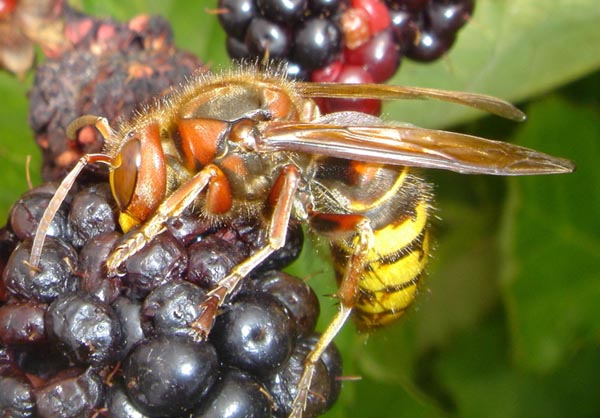
II. Description: Yellowjackets are black with yellow markings. The European hornet, Vespa crabro, is established throughout much of eastern North America, noted by its large size (more than 20 mm), extensive brown coloration, greater development of head behind eyes, and details of the yellow pattern on abdomen. It is less aggressive than many yellowjackets. The baldfaced hornet, Dolichovespula, will also feed on berries; note the black background with white markings. Various other hymenopterans will feed on drupelets as well.
III. Biology: Fertilized females overwinter. Wasps collect insect prey to feed to developing brood. Adults also collect sugar from ripening fruit late in the season.
IV. Injury: Yellowjackets feed on ripening berries and may be a nuisance during harvest operations.
VI. Monitoring: Observe berries
during ripening and harvest periods.